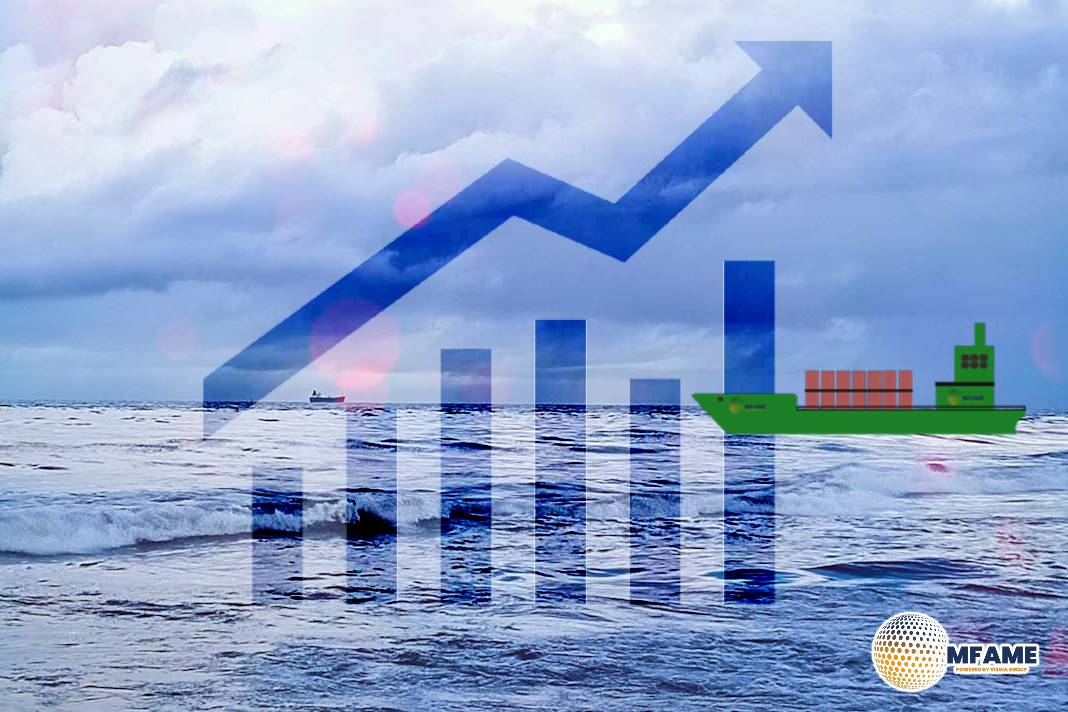No one disputes that the Red Sea crisis is massively diverting containerized goods around the Cape of Good Hope. On one end of the spectrum, there’s the view that the Houthi attacks will stoke inflation, cause major goods shortages, and have a material effect on Western economies, while container lines, previously expected to sink under the weight of excessive new building deliveries, will turn into cash machines. On the other end of the spectrum, there’s the view of respected shipping consultancy Drewry, which laid out a far more sober scenario during a presentation on Tuesday, reports Freight Waves.
“Rates in affected trades will remain elevated for the duration of the crisis, but they won’t go so high as to stoke inflation,” predicted Heaney.
Referring to the Middle East conflict in general, he said, “The impact on the world economy, if any, is going to come from higher energy costs rather than higher freight rates. We’ve not yet seen this materialize, but this could change if the situation in the region escalates and oil prices increase dramatically.”
According to Philip Damas, head of Drewry Supply Chain Advisors, the huge jump in spot rates following the Houthi attacks was partly related to timing. Red Sea diversions happened to coincide with a period of high demand as importers sought to load cargoes before the February Chinese New Year holiday break.
Supply will still outpace demand
Drewry estimates that diversions around the Cape affect around 30% of global container ship capacity, with those diversions increasing transit times by an average of 30%. This equates to a 9% reduction in global capacity.
The consultancy previously estimated that effective capacity would surge 9.3% in 2024 versus 2023 due to new building arrivals, with port throughput (demand) rising 2.3% — a major imbalance.
Taking diversions into account, it now estimates effective capacity will grow by 5.3% and demand will rise by 2.4% — still a big imbalance.
Drewry publishes a supply-demand index, with 100 points equating to a supply-demand balance. Before the Red Sea crisis, its index outlook for 2024 was at around 75. Running the numbers again to account for the diversion effect, the index rises to 77 if diversions last for the first six months of this year and 81 if they last all year.
Thus, the Red Sea effect on capacity “barely moves the needle,” said Heaney. “It’s not going to flip the overall overcapacity story.”
Comparing the Red Sea crisis to the supply chain crisis
Current container trade dislocations come at a time when memories of the supply chain crisis are still fresh. Some media reports have started to compare the impact of the Houthi attacks to the COVID-era disruptions.
As opposed to the case in 2021-2022, “there is now a surplus of ship capacity and you don’t have the widespread supply chain snarl-up we had back then.”
Did you subscribe to our daily Newsletter?
It’s Free! Click here to Subscribe
Source: Freight Waves




















Excellent blog here Also your website loads up very fast What web host are you using Can I get your affiliate link to your host I wish my web site loaded up as quickly as yours lol